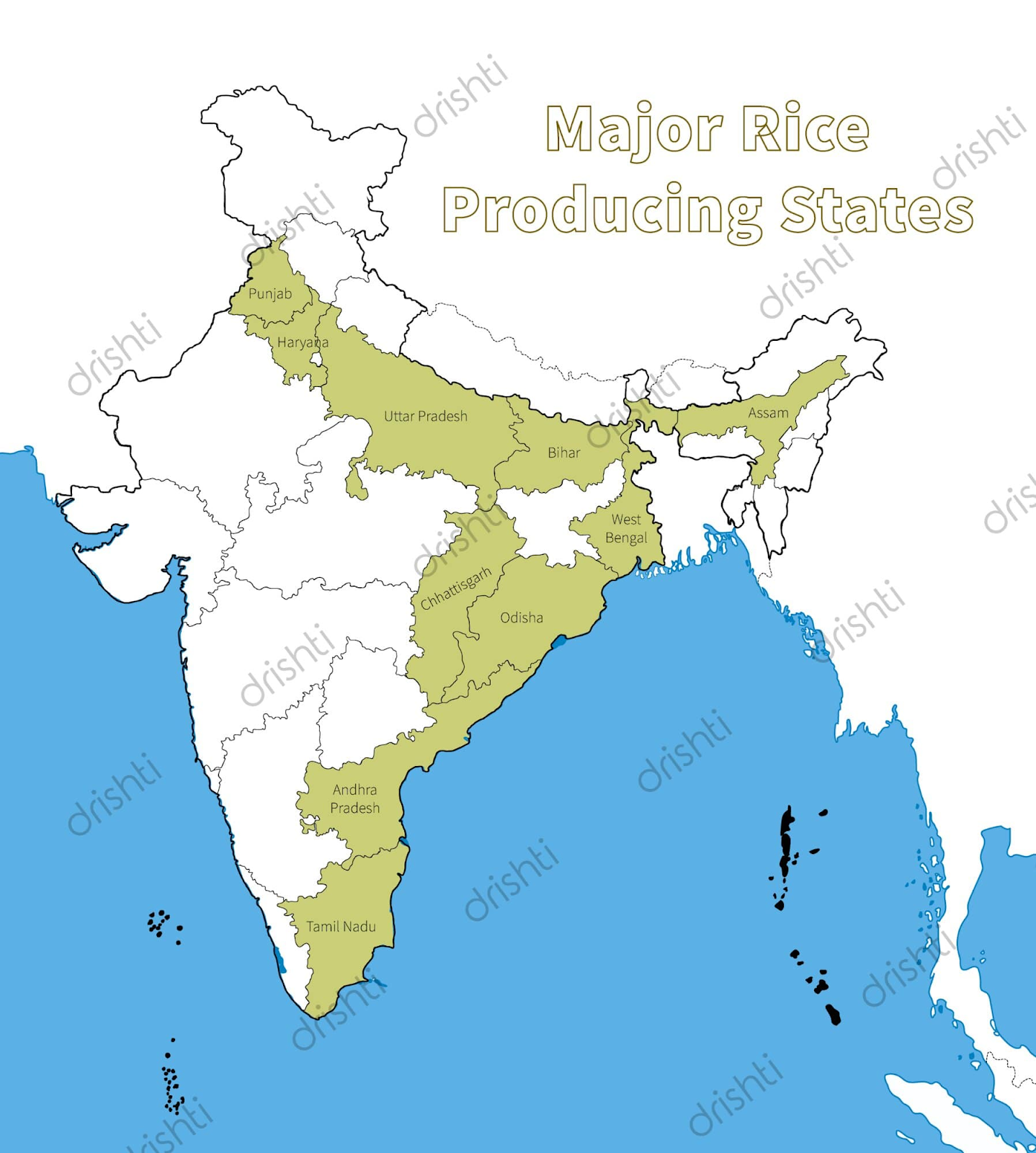Rapid Fire
Genetic Determinants of Rice Quality and Resilience
- 26 Aug 2025
- 2 min read
Scientists in China have discovered the Chalk9 gene responsible for rice chalkiness, a trait that makes grains brittle and opaque during milling, lowering yield and commercial value.
Other Key Genetic Determinants of Rice Quality and Resilience:
|
Gene/Quantitative Trait Locus |
Function |
Trait Significance |
|
Pi54, Pi9 |
Blast disease resistance |
Used in breeding for broad, durable disease tolerance |
|
BADH2 |
Aroma regulation |
Unique to fragrant rice, marker for premium varieties |
|
Sd1 |
Plant height (semi-dwarfing) |
Central to Green Revolution, boosts yield, reduces lodging |
|
Saltol QTL |
Salt tolerance (seedling stage) |
Important for coastal & saline areas, key for stress-resilient breeding |
Rice:
- Rice is the staple food for most Indians, cultivated on about 25% of the total cropped area, and India ranks as the second-largest producer globally after China & is also the largest exporter of rice globally.
- It is a kharif crop needing high temperature (>25°C), high humidity, 75–125 cm rainfall, and adequate sunlight; optimal 30°C day / 20°C night, tolerating up to 40°C briefly.
- Grows best in soils pH 5.5–6.5 with good water-holding capacity and drainage.
- Leading producers: West Bengal, Uttar Pradesh, Punjab.
|
Read More: Direct Seeding of Rice |







